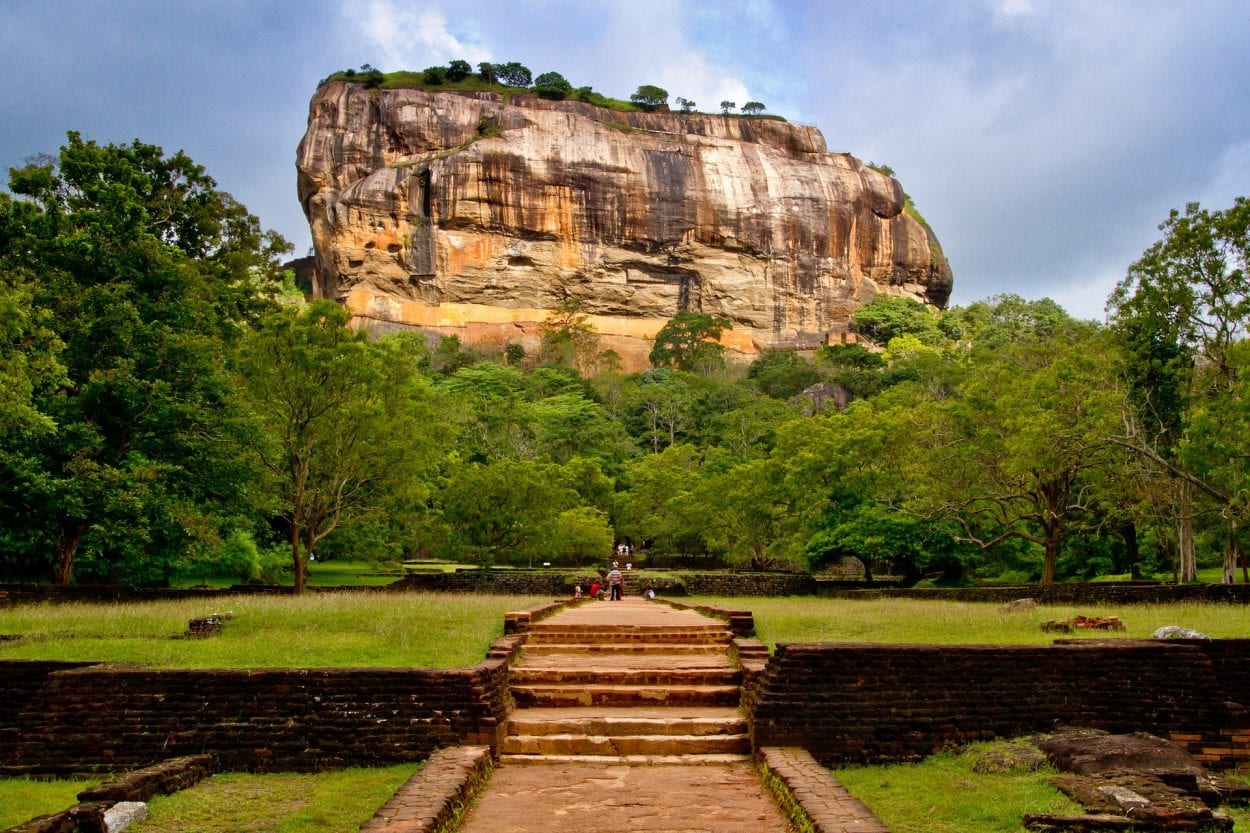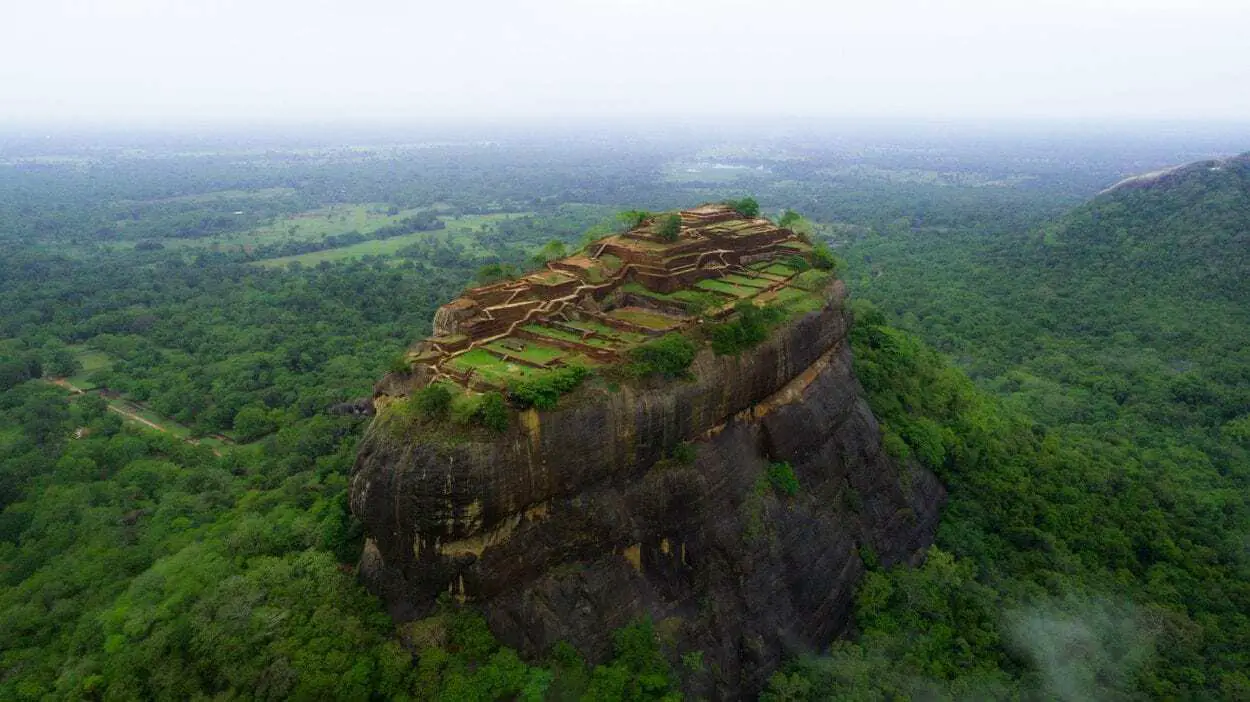Sigiriya is an archaeological site and ancient city, located in the Matale District in the Central Province of Sri Lanka.
The earliest evidence of occupation at the site dates from the Mesolithic Period in the Aligala rock shelter on the eastern face of Sagiriya. Buddhist monks later constructed rock shelters and caves between the 3rd century and 1st century BC.
The Cūḷavaṃsa, a written chronology of the monarchs of Sri Lanka credits King Kashyapa I (second king of the royal Mauryan dynasty of Sri Lanka) with the construction at Sigiriya, who proposed the site for his new capital moving it from Anuradhapura.
During Kashyapa’s reign (477 – 495 AD), Sigiriya developed into a complex urban city, centred on the Sīnhāgirim, meaning Lion Rock which is a large granite peak that rises 200 metres above the surrounding plain. The Sīnhāgirim was accessed through a sculpted lion’s head above the legs and paws flanking the entrance, but the head has since collapsed.

The rock contains the upper palace or citadel that includes the palace gardens with a rock-cut pool and a mid-level terrace that combined concepts of symmetry and asymmetry to intentionally interlock the man-made geometrical and natural forms of the surroundings.
The rest of the city was organised into a precise square model consisting of precincts, with the western precinct housing the water gardens, the boulder and cave gardens, the stepped or terrace gardens and summer palaces, the eastern precinct, a large reservoir to the south and the outer city.

Sigiriya was the capital only from AD 477 to 495. Kashyapa was defeated in battle by Prince Moggallana who committed suicide with his own sword. Moggallana moved the capital back to Anuradhapura where he reigned as Moggallana I from AD 496–513.
The site was converted to a monastery complex which survived until the 13th or 14th century, until it was eventually abandoned and became overrun by the jungle until its rediscovery in the nineteenth century.
Sigiriya first came to the attention of the western world when in 1831 Major Jonathan Forbes of the 78th Highlanders of the British army encountered the “bush covered summit of Sigiriya”.

Archaeological work at Sigiriya began on a small scale in the 1890s when H.C.P. Bell conducted extensive research on Sigiriya followed by the Cultural Triangle Project, launched by the Government of Sri Lanka from 1982 which has been excavating a large portion of the wider city ruins.
Header Image Credit : Public Domain





